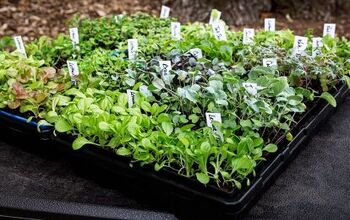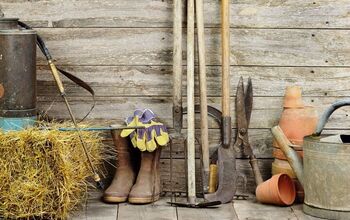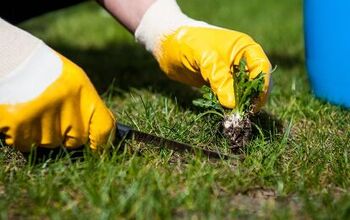Top Vegetable Garden Mistakes To Avoid This Spring

Spring looms like a faint light on the horizon that grows stronger every day, and this brightening light serves as a friendly reminder that gardening season will soon be upon us. When planting a vegetable garden, planning in the late winter and early spring can make all the difference in yielding a bountiful crop of vegetables in the summer. To ensure you are taking care of all your needs in advance, it is important to know all the common vegetable garden mistakes you should avoid this spring.
Common vegetable garden mistakes to avoid this spring include watering too much or watering too little. Not understanding your soil type and not using the correct type and quantity of fertilizer are also mistakes to avoid. Remember to consider your garden’s direct and indirect light areas, and read care instructions for each plant. Don’t be overly ambitious, and allow your plants plenty of space to grow by not crowding them and always remember to weed.
Growing a vegetable garden is a rewarding and exciting goal that anyone with a patch of outdoor space can achieve. The key is to plan and understand common mistakes, so you don’t make them yourself. Below is a list of the most common vegetable gardening mistakes you should avoid to ensure a fantastic vegetable garden this year.
12 Common Vegetable Garden Mistakes To Avoid This Spring
1. Planting Too Early
One common and easy mistake to make with a vegetable garden is planting too early. It is easy to get excited and eager to start your garden, but show restraint. If you live in an area with frosts that can last into the late spring, you must be very cautious about planting too early.
Just because you have a week of warm weather in March does not mean it won’t snow and freeze in early April. A cold snap in late spring can ruin all your vulnerable plants, and prevent some seeds from sprouting. Check planting schedules in your zone and follow the weather closely into late spring.
2. Planting Too Late
Another common timing mistake people need to correct is planting a vegetable garden too late. While planting too late can surely avoid the risk of frost and inclement weather, it might mess up the life cycle of your plants.
Remember that many plants take two, three, or even four months to yield fruit or vegetables. If you plant too late, the plant may not have a chance to produce. Some plants, like snap peas, do best when planted early, so they yield their bounty before the hot summer heat.
3. Not Watering Enough
One guaranteed way to kill any vegetable garden is to never water it. Even if you live in an area with frequent rainy days, the odds are the strong summer sun will soak up much of this precipitation and leave your vegetable garden wanting more.
Remember that even if your plants still find a way to stay alive, constant underwatering will likely yield a lower crop and plants that do not grow to their full potential. Watering in the morning is best, but you can water in the evening as well. Always avoid midday watering.
4. Using The Wrong (Or No) Fertilizer
All plants need nutrients. When you grow a variety of fruit and vegetable plants in your garden, you need lots of nutrients. Even soil with natural nutrients will quickly lose these important nutrients as your vegetable garden grows.
Make sure you buy the correct fertilizer for your garden, and use the right amount. Some gardens may require additional fertilization later in the season. Remember that this must be done each year to keep your garden thriving each spring and summer.
5. Trying To Be Overly Ambitious
Ambition is a great quality to have in life, even as a gardener. It is important, however, that you have realistic ambitions for your vegetable garden, especially if you are planting your first garden.
If you read that some plants are particularly challenging to grow in your climate, including certain melons and berries, perhaps stick with plants that you know will yield good results. Beans, squashes, herbs, and certain tomato varieties are a good place to start. Remember, you can always grow and build on what worked well this year for next year.
6. Neglecting To Read Care Instructions
Remember that care instructions are there for a reason, and it isn’t simply decoration. Read your seed packet or care tab carefully. There is always important information. Sometimes it will tell you the soil types that work best, and you almost always have growing zone and sunlight information.
When growing from seed, there are likely important variety-specific instructions as well. It is also important to check expiration dates on seeds so all your hard work is not in vain.
7. Over-Crowding Your Plants
One common vegetable garden mistake you should avoid if you are just starting is over-crowding. It is easy to forget that the small tomato and pepper plants you place in your garden will grow six times as large or greater.
Make sure you understand how much space each plant requires. Over-crowding your plant can cause it to struggle because it is competing for light, water, and nutrients. It also makes it harder to pick your vegetables and fruits.
8. Not Understanding Your Soil Type
One mistake that is easy to avoid when preparing your vegetable garden this spring is researching your soil type. There are many different types of soil. Some are sandy or rocky and drain easily, while others have clay or dense earth that drains slowly but is loaded with nutrients. Understanding your soil helps you know what to plant, how to fertilize, and also how much and when you need water.
9. Forgetting To Consider Direct Versus Indirect Sunlight
Without sunlight, you won’t have an outdoor vegetable garden. The entire reason vegetable gardens are outside is because of the sun. Photosynthesis gives plants life, and each plant in your vegetable garden has its specific sunlight needs.
Some plants require lots of direct sun, while others prefer indirect sunlight. Make sure you understand how light hits the entire space of your vegetable garden, and plant accordingly. Place your sun-demanding plants where the most sunlight falls, and other less needy plants in the periphery.
10. Neglecting To Factor In Pest Control
Even if you do all the right things to grow the perfect vegetable garden, all your hard work can disappear if you don’t consider pests. Everything from microscopic insects to large deer can wreak havoc on your vegetable garden.
It will take time to uncover all the pests in your area, but being proactive is a great way to begin. Protect your vegetable garden from animals with a fence, and put netting on vulnerable plants like tomatoes as needed. As you notice signs of pests, make sure you address the problem immediately or it will only get worse.
11. Neglecting Your Weeding Duties
Very few people, if any, enjoy weeding. Regular weeding is essential when it comes to the success of your vegetable garden. Weeds are unwanted plants that suck up water and nutrients meant for your vegetables, or overtake the plants altogether. If you don’t weed or prevent weeds from popping up by using the right mulch, you are putting your garden at serious risk.
12. Overwatering
Believe it or not, overwatering can be just as deadly to a vegetable garden as underwatering. One mistake you must avoid this spring in your vegetable garden is overwatering. This is particularly true in the spring when soil is often still saturated, the days are short and nights are still cool.
Too much water can drown your roots and rot your plants. It can also cause mold that is sometimes impossible to get rid of. Keep to a smart consistent watering schedule to avoid overwatering.
Final Thoughts On Gardening Mistakes To Avoid This Spring
Planting a vegetable garden is a rewarding and ultimately delicious and nutritious hobby. If you have a spare plot of land outside, you should plant a garden, but remember to avoid common mistakes. Some top mistakes to avoid include watering too much or too little, as well as planting too early or too late. Weeding and fertilizing are essential. Try not to be overly ambitious or overcrowd your plants, and remember to always read the care instructions.
Related Guides:

Tom Gaffey is an expert writer who currently resides in Washington D.C. Tom has a passion for real estate and home improvement writing, as well as travel and lifestyle writing. He lived the last twelve years in Hawaii where he worked closely with luxury resorts and event planners, mastering his knowledge of aesthetics and luxury products. This is where he found his passion for home improvement and a keen interest in DIY projects. Currently, Tom resides in Washington D.C, and also working on his debut fiction novel.
More by Tom Gaffey



























